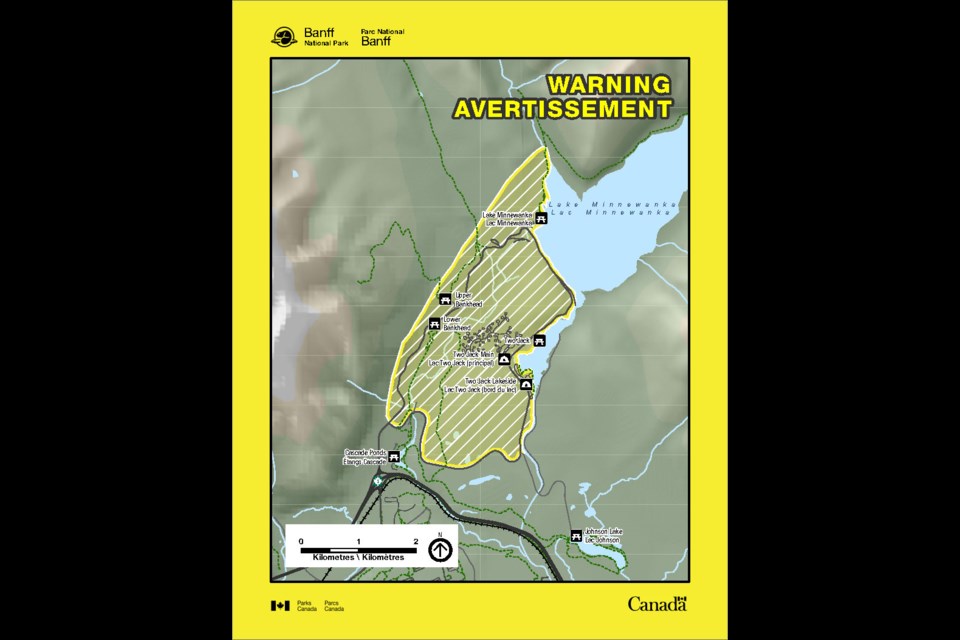BANFF – Parks Canada is employing a warning for the Lake Minnewanka Loop in Banff National Park as a black bear that recently accessed human food is frequenting the area.
The bear came near a picnic table with human food at the Lake Minnewanka day-use area on July 15, causing the picnicking visitor to flee the area and the bear to subsequently access the food.
“The light brown, black bear was untagged and uncollared but is a known bear to Parks Canada staff as it was observed in the area in June,” said Kelly Veillette, Banff field unit spokesperson, in an email.
Parks is monitoring the area for further bear activity and actively working to radio collar the bear.
“Radio-collaring will allow Parks Canada wildlife staff to track the bear’s location in real time and begin an aversive conditioning program, where the bear will be proactively hazed away from areas frequented by the public to reinstill the natural wariness of humans that may be lost after a bear accesses an unnatural food reward,” said Veillette.
Aversive conditioning is not always successful, but is an often effective tool in bear management, she further noted.
“Preventing food conditioning is always preferable to more reactive measures for managing human-wildlife conflict. Keeping wildlife wild requires the help of every visitor. Help protect this special place by preventing wildlife from accessing non-natural food rewards, even those as small as an orange peel or candy wrapper.”
The bear warning was put in place July 18 and is inclusive of Lake Minnewanka day-use area up to Stuart Canyon, Upper and Lower Bankhead, as well as Two Jack Main and Two Jake Lakeside campgrounds.
“As always, visitors should be prepared to encounter a bear at any time in Banff National Park and should be extra vigilant to ensure they are following practices to keep themselves and wildlife safe,” said Veillette. “This includes taking attractants with you whenever it is safe to do so and deploying bear spray to deter a bear.”
To keep wildlife wild and on the landscape, Parks Canada recommends the following:
- Keep a clean picnic and campsite. Always store food and all scented items in a vehicle or bear proof-locker.
- Leave nothing behind. Dispose of all garbage in a wildlife-proof bin or pack it out with you.
- Keep all garbage, food and liquids out of fire pits. Even when these items are burned, they can still attract wildlife.
- Make noise. Let bears know you are in the area. Call out, clap, sing or talk loudly, especially near streams, dense vegetation and berry patches, on windy days, and in areas of low visibility.
- Always carry bear spray, ensure it is accessible, and know how to use it before you head out on the trails. Bear spray can help deter other large mammals too such as cougars, wolves, coyotes, elk, deer, moose, and bison.
- Watch for fresh bear signs. Tracks, droppings, diggings, torn-up logs and turned-over rocks are all signs that a bear has been in the area. Leave the area if the signs are fresh.
- Keep your dog on a leash at all times (it is the law) or leave it at home. Dogs can provoke defensive behaviour in bears.
- Larger size groups are less likely to have a serious bear encounter. We recommend hiking in a tight group of four or more. Never let children wander.
- Report all bear sightings immediately to the visitor centre or Banff Dispatch at 403-762-1470.
The Local Journalism Initiative is funded by the Government of Canada. The position covers Îyârhe (Stoney) Nakoda First Nation and Kananaskis Country.



